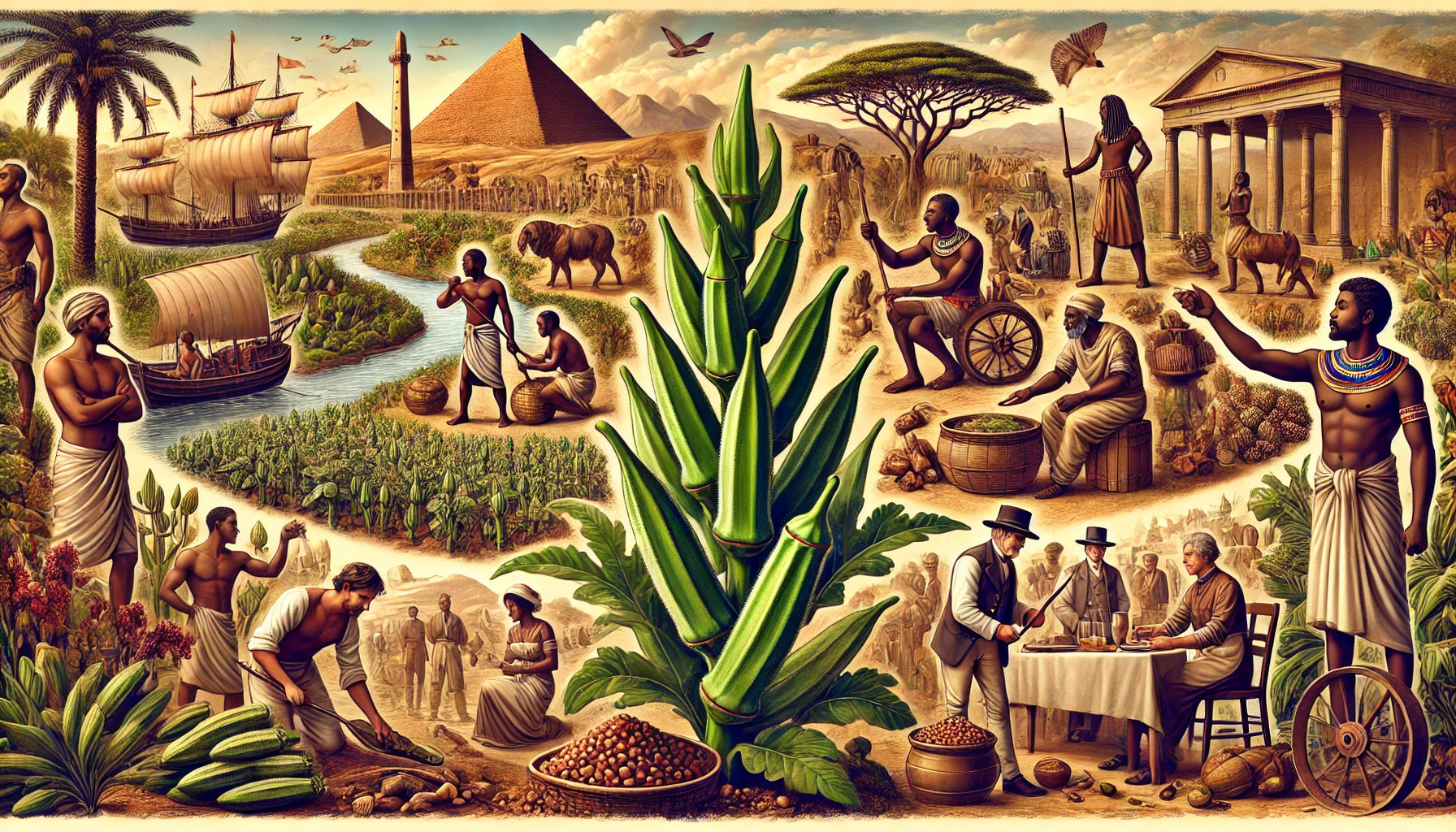Introduction:
Okra, scientifically known as Abelmoschus esculentus, is a vegetable with a long and intriguing history, spanning continents and cultures. From its origins in Africa to its global presence today, okra has journeyed through centuries, leaving its mark on cuisines and cultures worldwide. This article delves into the fascinating history of okra, exploring its origins, spread across continents, cultural significance, culinary uses, and its role in agriculture and medicine.
Origins and Early Cultivation:
The origins of okra can be traced back to ancient Africa, where it was cultivated as early as 3500 BCE in regions around Ethiopia and Sudan. Indigenous African tribes such as the Bambara, Yoruba, and Hausa were among the first to cultivate and consume okra. The plant thrived in the warm and humid climates of West Africa, where it was valued for its edible pods and seeds, as well as its medicinal properties.
Spread to the Middle East and Asia:
Okra’s journey beyond Africa began with the trans-Saharan trade routes, through which it reached the Middle East and Asia. By the 12th century, okra had become a staple in Middle Eastern and Mediterranean cuisines, particularly in regions like Egypt, Syria, and Turkey. The Arabic name for okra, “bamia” or “bamya,” reflects its ancient roots in the region.
During the Islamic Golden Age, Arab traders introduced okra to South Asia, where it found a receptive environment in the fertile plains of the Indian subcontinent. In India, okra is known as “bhindi” or “lady’s finger,” and it became an integral part of regional cuisines, especially in dishes like bhindi masala and sambar.
European Encounter and Global Spread:
Okra’s introduction to Europe can be attributed to the Moors, who brought it to the Iberian Peninsula during their conquests. By the 16th century, okra had gained popularity in southern Europe, particularly in Spain and Portugal. Spanish explorers later introduced it to the Americas, where it became entrenched in the culinary traditions of the Caribbean, South America, and the southern United States.
In the southern United States, okra thrived in the warm climate and fertile soils, becoming a staple ingredient in Creole and Southern cuisine. Dishes like gumbo, fried okra, and stewed okra became iconic representations of regional cooking, deeply ingrained in the cultural fabric of the American South.
Cultural Significance and Culinary Uses:
Throughout its journey, okra has not only served as a source of sustenance but also acquired cultural significance in various societies. In many African and Middle Eastern cultures, okra is believed to possess medicinal properties, with uses ranging from alleviating digestive issues to promoting overall health.
In culinary terms, okra’s versatility knows no bounds. Its mucilaginous texture, often a point of contention for some, lends itself well to thickening stews and soups, such as gumbo. Okra can be fried, roasted, pickled, or added to curries, salads, and stir-fries, showcasing its adaptability across different cuisines and cooking styles.
Agricultural and Medicinal Aspects:
Beyond its culinary uses, okra plays a significant role in agriculture and medicine. Okra plants are hardy and drought-resistant, making them suitable for cultivation in diverse climates. The plant’s ability to thrive in warm temperatures and tolerate poor soil conditions has made it an important crop in regions with challenging agricultural environments.
In traditional medicine, okra has been utilized for its various health benefits. Rich in vitamins, minerals, and antioxidants, okra is believed to support digestive health, boost immunity, and regulate blood sugar levels. Additionally, research has shown that okra may have potential anti-inflammatory and anti-cancer properties, further highlighting its importance beyond the kitchen.
Conclusion:
The history of okra is a testament to its resilience and adaptability as a plant, as well as its enduring significance in culinary, cultural, agricultural, and medicinal contexts. From its origins in Africa to its global presence today, okra continues to captivate taste buds, inspire culinary creativity, and contribute to the rich tapestry of world cuisine. As we celebrate the legacy of okra, we acknowledge its role as not just a vegetable but a symbol of cultural exchange, innovation, and sustenance across borders and generations.



